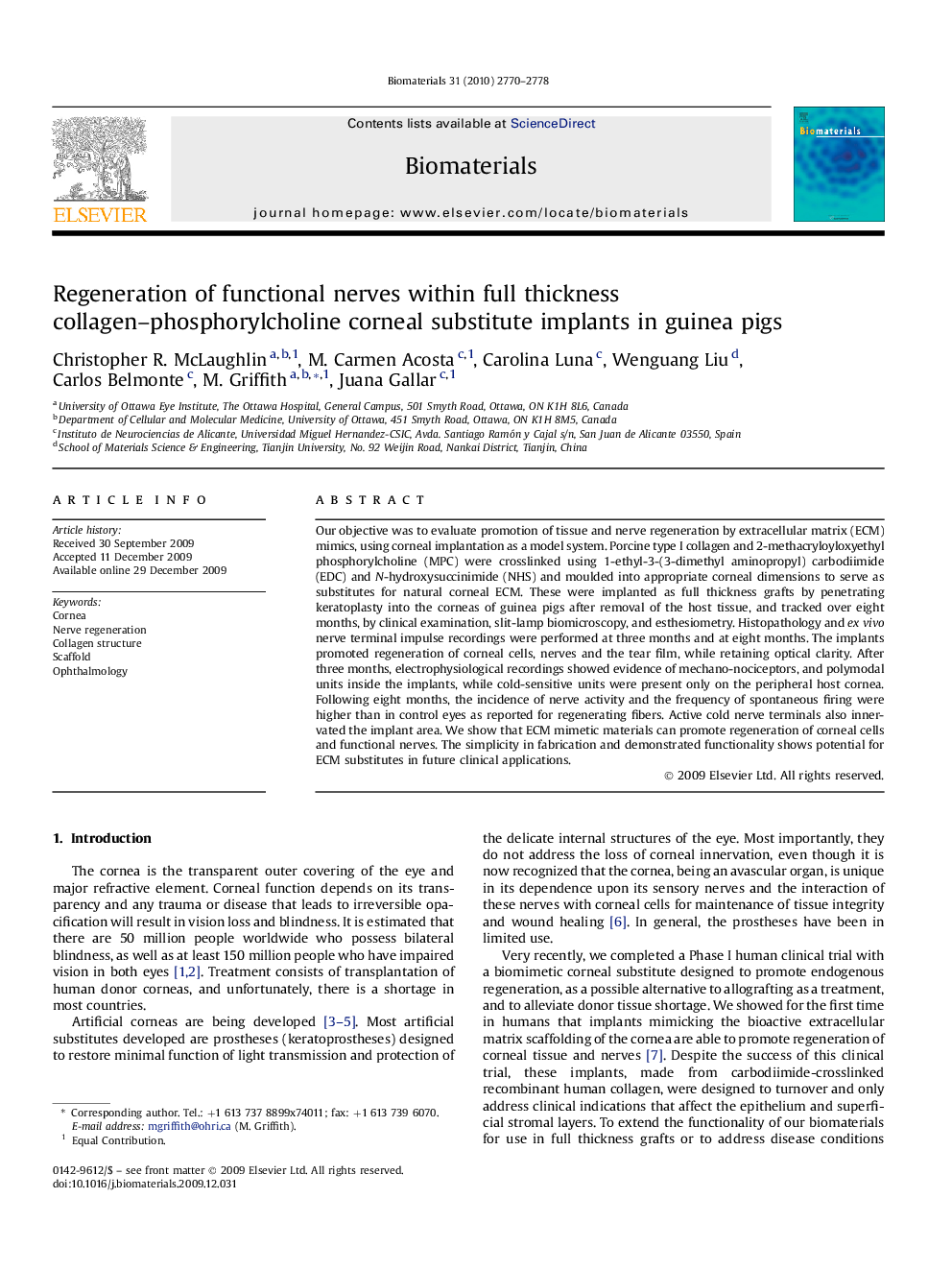| Article ID | Journal | Published Year | Pages | File Type |
|---|---|---|---|---|
| 8564 | Biomaterials | 2010 | 9 Pages |
Our objective was to evaluate promotion of tissue and nerve regeneration by extracellular matrix (ECM) mimics, using corneal implantation as a model system. Porcine type I collagen and 2-methacryloyloxyethyl phosphorylcholine (MPC) were crosslinked using 1-ethyl-3-(3-dimethyl aminopropyl) carbodiimide (EDC) and N-hydroxysuccinimide (NHS) and moulded into appropriate corneal dimensions to serve as substitutes for natural corneal ECM. These were implanted as full thickness grafts by penetrating keratoplasty into the corneas of guinea pigs after removal of the host tissue, and tracked over eight months, by clinical examination, slit-lamp biomicroscopy, and esthesiometry. Histopathology and ex vivo nerve terminal impulse recordings were performed at three months and at eight months. The implants promoted regeneration of corneal cells, nerves and the tear film, while retaining optical clarity. After three months, electrophysiological recordings showed evidence of mechano-nociceptors, and polymodal units inside the implants, while cold-sensitive units were present only on the peripheral host cornea. Following eight months, the incidence of nerve activity and the frequency of spontaneous firing were higher than in control eyes as reported for regenerating fibers. Active cold nerve terminals also innervated the implant area. We show that ECM mimetic materials can promote regeneration of corneal cells and functional nerves. The simplicity in fabrication and demonstrated functionality shows potential for ECM substitutes in future clinical applications.
